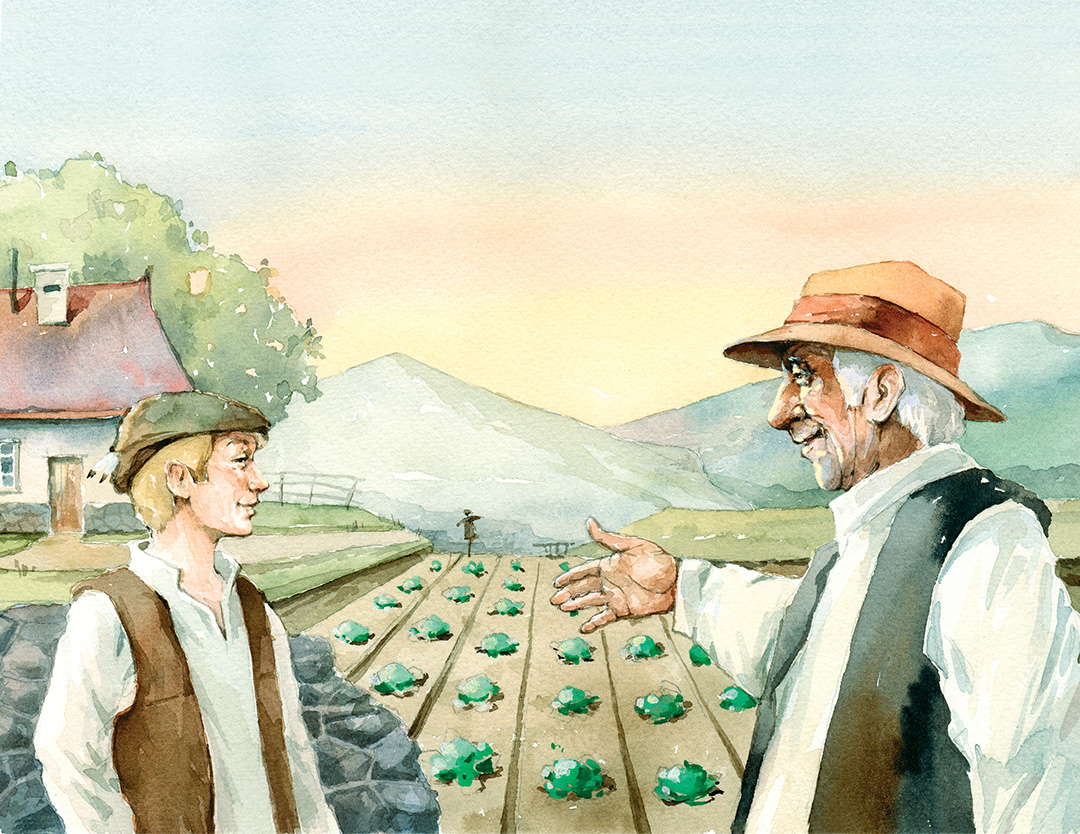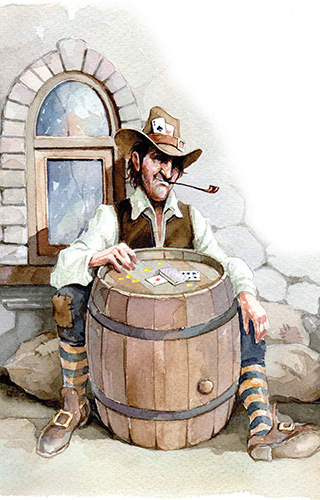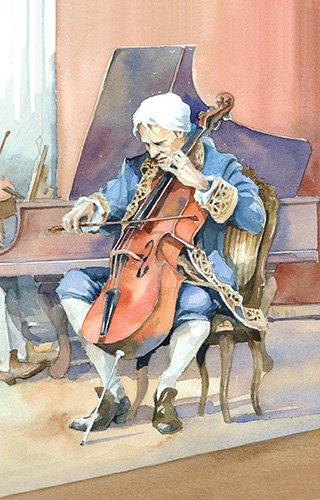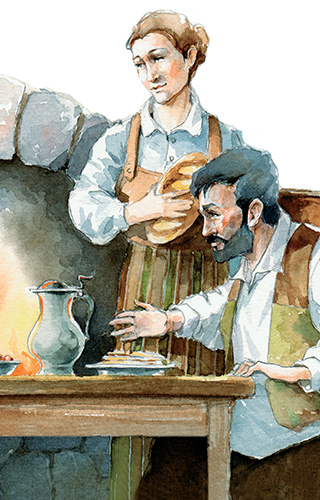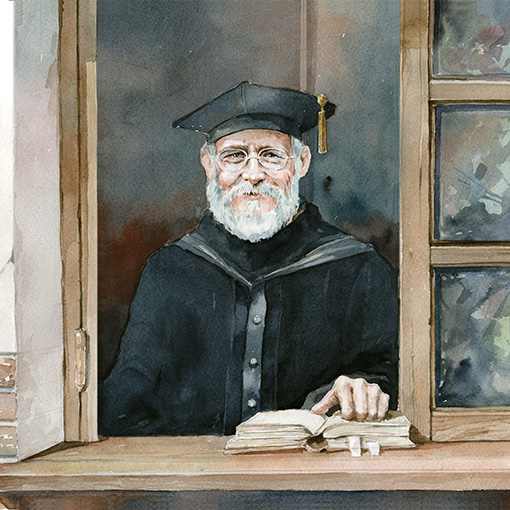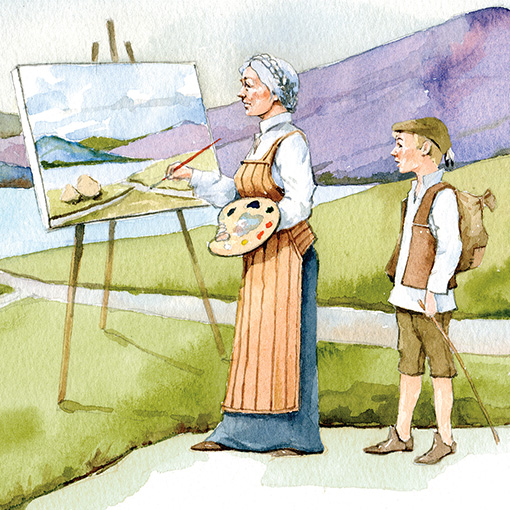Now Available!

IN
A Book for Children (and Adults)
Ihave read many books to our children over the years, but I found myself gravitating to just a few that I enjoy reading more than once. Those few can keep the attention of a child while also doing at least one of three things: 1) make me think about ideas that engage my own mind or imagination; 2) give me a sense that my children are learning something valuable; 3) display beauty, creativity, or ingenuity.
Since I haven’t found enough of those kinds of books, I thought I’d write one. In the spirit of C.S. Lewis, “I wrote the [book] I should have liked to read.” ¹As quoted in C.S. Lewis by Roger Lancelyn Green (Bodley Head, London), 1963, p. 9 My hope is that this book will meet all three of the criteria above and be one that parents enjoy reading to their children again and again.
The Idea
While attending Westminster Seminary in Philadelphia, I heard a lecture by Dr. Fred Putnam entitled, “Yahweh is a Farmer.” Dr. Putnam explored the idea that the metaphors communicated in the Bible provide mini Biblical theologies that teach us something about God and ourselves through each “metaphorical world.” Long story short, that lecture, and the courses I subsequently took from Dr. Putnam, created a watershed in the way I think and have shaped my interests since. (This book is dedicated to Dr. Putnam, a rare example of a humble scholar who relates to his students as fellow learners.)
I have found that some people “get” metaphors rather easily and others struggle with them. I believe understanding metaphor is a vital skill for better understanding just about everything, so I thought it would be helpful to introduce children to them at an early age. The book presents ten metaphors for thinking about life. Each of them provides a rich vein of thought that should also benefit parents as they read the book and discuss it with their children.
The Story
The story follows a young orphan boy who leaves his home town and difficult background to find a good life. As he journeys, he meets people of various professions (farmer, composer, teacher, soldier, artist, etc.). Each character gives the boy a different metaphor for thinking about life. For example, a farmer tells the boy that life is a garden:
“Life is a garden . . . Its soil can sprout forth both good and bad plants with equal opportunity for both to thrive. It is up to us to pull and cast away the weeds, and to plant, water, and nurture the good things that we desire to grow.”
The book features 22 beautiful watercolor illustrations by Ukrainian artist Dmitry Morozov.
There are ten metaphors for life explored in the book. Life is a garden, game, race, canvas, test, symphony, battle, journey, story, and gift. The characters explain each one to the boy as the farmer explains the garden metaphor above. As with all metaphors, each offers a host of implications creating different food for thought each time one reads the book.
Two “Hidden” Honors
Since two people who had inspired the ideas and aesthetic approach for this book, I thought it would be fun to honor them by having the illustrator, Dmitry Morozov, base the look for two of the characters on them.
I’ve already mentioned the dedication of the book to Dr. Fred Putnam above. I decided to base the schoolmaster illustration on him (below left) because of the influence of his teaching upon my own thought. Aesthetically, I wanted to pay homage to Barbara Cooney (1917-2000). I still enjoy reading her books, such as Ox-cart Man and Miss Rumphius, to our children because of her beautiful illustration style. Her likeness appears in the book as an artist who teaches the boy “life is a canvas” (below right).
An Unexpected Turn
Though this was my first time to write a story, I suspect my experience is common to others who do the same. I started out with some sense of the idea I wanted to express, but as I wrote, the story began to take me in a direction I hadn’t anticipated.
When I began to ponder how the book should end, I thought it would be encouraging for the boy to end his journey with a family who took him in and gave him a good home. What metaphor could capture such an action? “Life is a gift” seemed appropriate since those who take in others choose to share the gift of their own lives with another. The book ends with a couple who hear the boy’s story and offer their home as his own. This allowed the story to end with the promise of a new beginning.
My wife and I know several families who have adopted or taken in children and shared their lives with them. We know such an act involves tremendous courage and sacrifice, and I greatly admire those who choose that path. I hope this book will honor their choice and encourage the children with whom they share their lives. ![]()

